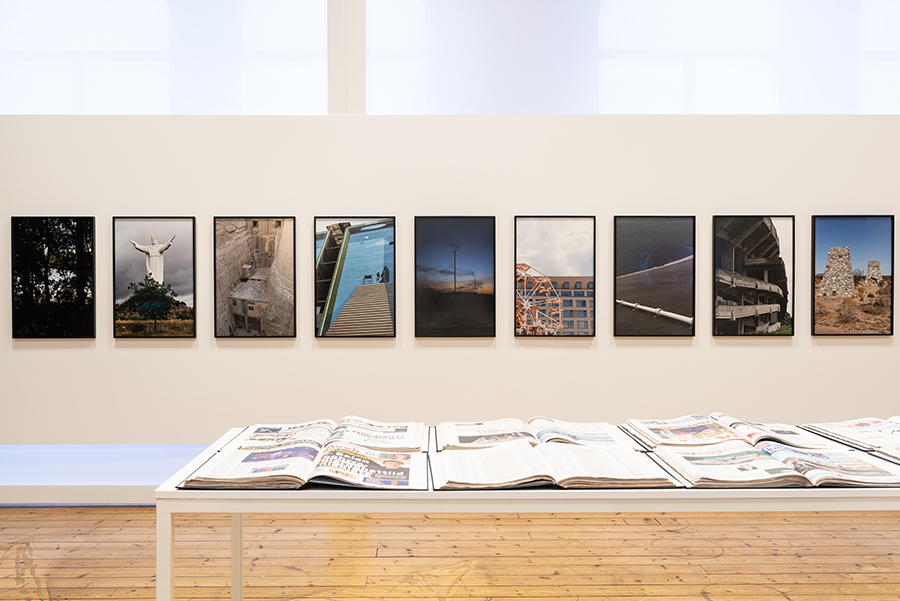Bergen Assembly: When the Polyphony of Voices Hinders Us From Listening
This year’s edition of the triennial advocates for several marginalized groups but fails to create enough space for their individual discourses
This year’s edition of the triennial advocates for several marginalized groups but fails to create enough space for their individual discourses

A spectre is haunting museums, the spectre of exclusion. ‘Actually, The Dead Are Not Dead’, the third iteration of the triennial Bergen Assembly, calls upon traditionally supressed voices to conjure a form of inclusive historical revision from below. On a formal level, diversity is promoted here through the use of differing exhibition types: a pristine white cube; a classical museum space replete with 19th-century, salon-style red walls; a former industrial meat-packing plant turned arts space; and an inviting arts centre hosting a small but empowering gallery with a programme revolving around women’s healthcare practices. A deeper and richer polyphony of voices can be found in the triennial’s incorporation of artists from wildly divergent backgrounds as well as artworks whose subject matter investigates various forms of resistance and perseverance.

However, harmony is often hard to come by, as visitors are required to transition abruptly from one work’s disparate narrative to the next. Curious juxtapositions abound at Kode 1, the salon-style museum. From Murder Not Accident (2019) – a hard-hitting film on unsafe working conditions in Turkey, shot by the labour activist collaborative Workers’ Families Seeking Justice and its Support Group – we are propelled straight into Nina Støttrup Larsen’s Mercurial Relations (2016–19), a revelatory and document-heavy installation on the CFA Franc: currencies utilized by multiple West and Central African countries that are pegged to, and thus manipulated by, the French treasury and the European Central Bank.
In a very low voice, so then you’re sort of there (2018) is the title of Emma Wolukau-Wanambwa’s series of photographs and text documenting foreign artefacts from an exhibition at the nearby Bergen University Museum of Cultural History on the country’s seldomly discussed involvement in the transatlantic slave trade as well as other instances of European colonialism. In a vertiginous mise en abyme, the series displays feint reflections of artefacts upon the exhibition’s various display cases, each holding their own objects, and leads onto Minna Henriksson’s wall drawing Nordic Race Science (2016–19), mapping how pseudoscientific race theories were developed in Scandinavia from the 1850s to 1945.

Led by the exhibition’s head ‘conveners’, Hans D. Christ and Iris Dressler, the curatorial team earnestly advocates for those persons and groups generally marginalized by dominant cultures. Two tremendous videos at Bergen Kunsthall queer the idea of a shared objective reality. Imogen Stidworthy’s Iris (a fragment) (2018–19) profiles an autistic writer and therapist, who delineates how she perceives her own body through a fixed routine of actions, such as touching her own hair, which provides her with a ‘normative’ sense of self. In Jan Peter Hammer’s Dopamine (2019), a delusional man addicted to video games lives his daily life as if he were on a hero’s quest, and in so doing, ends up breaking into an aquatic theme park to swim in an Orca tank, and drowns to death. While these works all highlight the vital current debates surrounding the decolonialization of Western museum monoculture and ableism, their competing voices come close to drowning each other out. Furthermore, the exhibition’s lack of structured pauses between these equally necessary works reduces the visitor experience to a fatigue-inducing, doom-and-gloom cacophony.

As an alternative to demonstrative exhibition-making and its discontents, ‘Actually, the Dead Are Not Dead’ finds its true strength in an event and gathering spot called Belgin. Part of the triennial’s office space, Belgin hosts some of the exhibition’s public programming, but also serves as a meeting place and cafe for visitors. While this throwback to 1990s ‘new institutionalism’ now appears akin to the coworking spaces that have sprouted up like fungi in the gig economy mulch, it does offer a real place of assembly within the festival’s walls, yet beyond its programmatic reach. Perhaps here a new story may be born.
Bergen Assembly, ‘Actually, The Dead Are Not Dead’ is on view at various locations in Bergen, Norway, until 10 November 2019
Main image: Niillas Holmberg, Jenni Laiti and Outi Pieski in collaboration with the Ellos Deatnu! Group , Moratorium Office: advisory service for decolonialist self-determination, 2018, installation view, Kode 1, Bergen, 2019. Courtesy: the artists; photograph: Thor Brødreskift
























